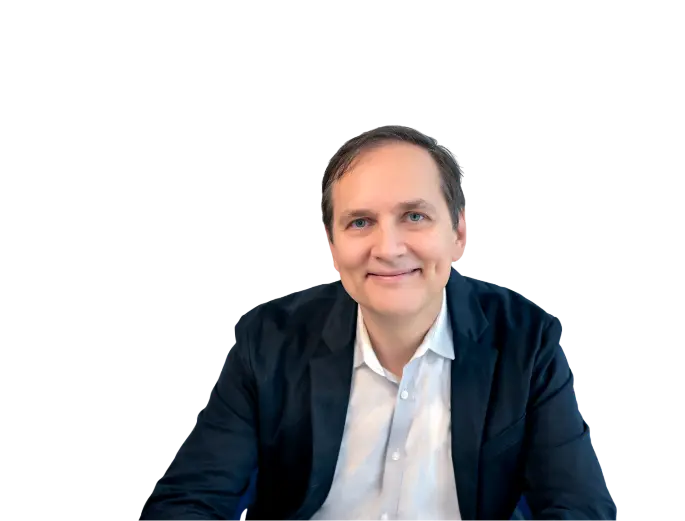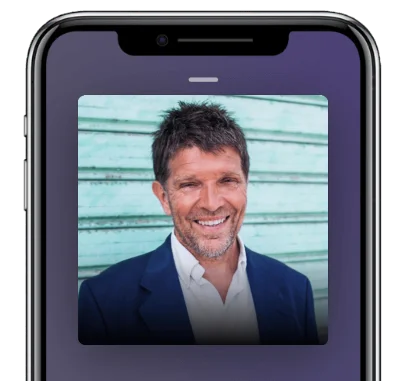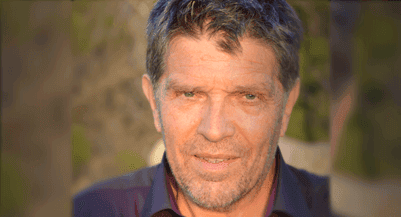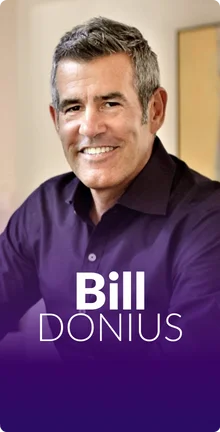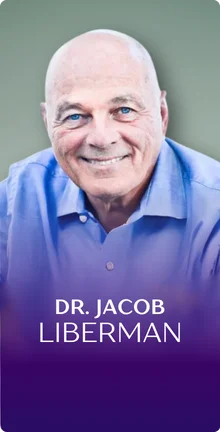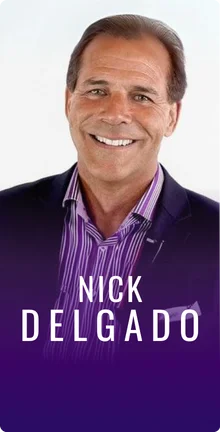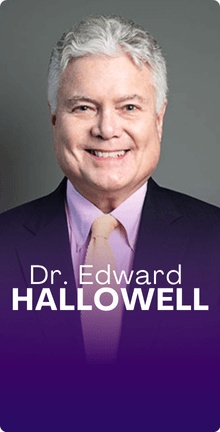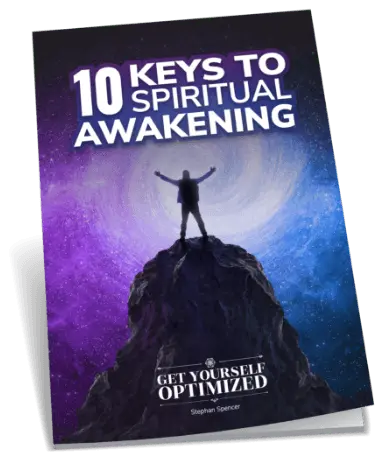Good to join you, Stephan.
We met each other at the Genius Network annual event, which is great. I ended up joining Genius Network after attending some of their events. What a great network of people. I was impressed by what you were saying about your understanding of the brain, perception and performance. It dovetails nicely with what I’m focused on, especially with this podcast, Optimized Geek, in terms of getting higher performance, getting into a place of super learning and not being reliant on medications that are unnecessary. There’s a lot for us to talk about here. If you could share what brought you to this area of study? You were in a totally different area of business and making a pile of money, living a good life so it seems. Then things shifted for you pretty significantly. Could you share a little bit about that?
I’m an entrepreneur. I don’t try and be a disruptive entrepreneur but it seems like that’s what I am without trying. I’ve been to a few industries. For some reason, my relatively uneducated brain sees different things, so I come up with innovative solutions. I was having a good time from the outside. Everybody that knew me saw all of the toys, the boats, the planes, the cars, all of that. What they didn’t see was the eldest of my four children was struggling badly. She had all the best textbooks that we could find. They were saying she’s going to live with her problems. Finally, she attempted to take her life. That was a huge wakeup call for me. I’m a driven person. I grab opportunities and I run with them. I’m a natural researcher. As I was driving to the hospital to find out if she was going to live, I made the conscious decision that I will spend the rest of my days finding out what gave her issues and to help her. My initial thought was that’s all I was thinking about, to find out what it was that she was struggling. When I got to the hospital, they were saving her life. She’s happy now and I’m thrilled. My life mission has been completely changed.
I got rid of my businesses. Apart from one, I still own a private school in England, which is very thrilling. I got rid of all of my other businesses to focus totally on originally Susie’s brains, but now the brains of everybody. There’s much potential that has never reached the man in the street, like you and me. It’s never reached us. There’s so much potential in the brain. It’s not reaching anybody. It’s not reaching the education system yet. It’s not reaching the health system yet but it’s accessible to everybody. I’ve spent many years doing research on tens of thousands of people to find safe ways of helping them find that potential. It was for my daughter. Now, it’s the bit I can do to help mankind.
This brain-body connection in humans is underdeveloped and babies naturally develop it. Share on XYou’ve discovered some incredible things in this process and made some breakthroughs and helped a lot of people. How can we share a little bit with our audience? I want to make sure that we give them some things that they can apply to their lives as well as if they have children. It’s a different ballgame if you’re a parent, you’ve got kids and they’re struggling in school or they’ve been labeled as ADD, ADHD, dyslexic, as badly behaved, anxious or whatever. There are issues that are different if you’re a parent versus if you’re an adult trying to perform and live a fulfilled, happy life.
You’ve touched on what is close to my heart, all those families out there that have got a child that’s struggling. When they lose sleep, I lost sleep. I know what it’s like. You feel hopeless as a parent having a child that’s struggling with some issue. Many are labeled, many are not labeled. The labeling process needs completely scrapping and starting again because it’s not based on the science we know about what causes these children to struggle. My heart pours out to those families that have got autism, ADHD, reading issues, unable to make friends or physically clumsy. There are all sorts of incomplete skills in the brain and the assumption we all make is, “There’s something wrong with their brain.” Yes and no. Yes, in the sense that it is something that’s happening in the brain, but no it’s not a problem. It’s not a disease. It’s something that we can naturally do something about and resolve. That’s the great news. This is going to reach people in 20, 40, 60 years’ time, but families can’t wait.
I’m a board member of the REACH Institute in New York, which is led by a famous professor who used to be Head of Research at the Mayo Clinic. He was a professor at Columbia. He was Head of Child Psychiatry at the National Institute of Mental Health. He invited me to become a board member there because he wanted what I knew and what I was doing to come to this arena. Many incredible things are out there that are taking a generation or two or three before they reach the people that need them. The people behind what I’m doing, the researchers and neuroscientists, are awesome. What they’ve done is make these incredible pieces of the jigsaw of science. For some reason, until I came along, nobody pieced them together to say, “This is why these children are struggling. This is the part of the brain where the problems lie. This is what you can do to stimulate that part of the brain in a natural way. This is the end result.” All those four pieces are there but nobody put them into a jigsaw. What I’m presenting, I can’t take credit for it apart from being a good jigsaw maker. I am not the one that did the original research. It came out largely of places like Harvard Medical School, a professor there by the name of Jeremy Schmahmann. If anybody is interested in the brain, read it. Follow his stuff. Look at his videos because this guy is a generation or two ahead of most neuroscientists. He was the inspiration for me and his work together with a professor from England called Nicolson. To them, I owe my daughter’s life now.
What would be a book or some paper that would be a good starting point if you’re interested in that particular researcher at Harvard?
Search him and his work on the cerebellum, it’s amazing. If any of your followers would be fascinated, they will see this stuff is mind-blowing. He opens up exactly how the brain works and in particular, there’s a section of the brain at the back called the cerebellum. That’s where I focused all my attention on is the link between brain and body. It’s the brain-body connection but it’s like an electrician and it hardwires the brain. People always tell us we only use a part of the brain and that’s partly true. The potential of the brain is enormous. To that extent, it’s absolutely true. The more the electrician wires up connections between the brain, the more we are capable of, the more automatic all of our cognitive functions become and the calmer we are, the better our performance, the better we are at learning, at recalling, at coordinating information, making decisions, remembering things, thinking things through, being innovative and having peace on top of all of that. That’s the consequence of developing the cerebellum. That sounds a bit grand but it’s doable.

In fact, babies are developing cerebellum all the time but it’s in a randomized way. At the end of it, parts of the cerebellum are highly developed and we are skilled at those things and we’re naturals at those things. Parts that develop don’t get developed. My part of my cerebellum that wasn’t developed was my dancing skills, for instance, which doesn’t matter. It means when we go to the odd family wedding, I generally keep it out of the way. If it’s a skill like an eye tracking which makes reading impossible or auditory processing which makes listening and retention difficult, these are important parts of the cerebellum that are missed out. There’s a farm right next door to where I am and I went to watch the lambs being born. One lamb I watch particularly, it was cute. Within a minute of being born, it was standing up. It was then trying to feed. The next day I saw the same lamb in the field jumping and skipping because it’s got a cerebellum that’s fully developed. Animals have got a real advantage over us, humans. We’ve got a much more complex brain. Our cerebellum takes two years to get to where a lamb’s cerebellum is when it’s born. This brain-body connection in humans is underdeveloped and babies naturally develop it.
It’s a bit hit and miss. The process I’ve gone through is to find ways of naturally continuing the development of the cerebellum. More and more of the brain gets wired up, more things become automatic, effortless, natural and precise. Whether it’s learning skills, negotiation skills, communication skills or sporting skills, whatever it is the brain acts faster and better. That was a quick summary of some of the research behind this. I hope it helps people because this is life-changing to kids who’ve got autism or dyslexia, whether or not they’re labeled. It’s life-changing to people who are struggling with depression, moods or memory failing at old age. If you’re an athlete who wants to get a league up, this is likely to do it for you. It’s certainly better than anything else on the planet.
What’s the process to develop your cerebellum if it didn’t fully develop when you were an infant or early toddler?
The process goes like this. We’ve all got totally different brains. Your brain is different to mine, as is everybody’s brain is totally unique. The potential in everybody’s brain is different. The first thing we do is find that potential and identify the strengths and the possibilities in that brain. From that, we can work out exactly what type of sensory stimulation together with what specific coordination activity needs to be happening so that you’re getting brain cells in the correct part of the cerebellum to fire together because what fires together eventually wires together. We’re providing effectively different types of sensory stimulation plus physical coordination activities that are unique for every person. The duration, the level of sensory stimulation, the degree of stimulation varies and we change that every day. It’s a process that takes you ten minutes twice a day for typically six months. Severe cases of autism and so on tend to take longer than that because they’ve got many foundational layers to build up first.
The typical child that’s struggling or the adult who wants to sharpen up between three and six months is normally enough. Those exercises develop every day and they get more intense every day and they go to different areas of the brain. Every month we repeat a neurological test, which gives us a graphical picture of exactly where that potential is growing, where there’s more potential to focus on. We’re finetuning that process all the time for those six months we work together. People have graphs, they have charts and they keep their own anecdotal notes. We do all that on the system so they can see the change neurologically. They can see the change practically in their life. Every day I get messages from people, “You never told me this would happen and that would happen and this would happen.” I can’t share with you how exciting this is and how life-changing it is for many people.
The more the brain gets wired up, the more things become automatic, effortless, natural, and precise. Share on XIs this based on some neurofeedback or something? What’s this process like?
It’s not neurofeedback. It’s completely natural. There are times where we can see what we’re doing being replicated in a baby. When a baby is rolling over and tumbling and so on, they are giving their cerebellum-specific stimulations. In actual fact, many of the children that bypass most of their crawling phase end up with some learning issues in school. For instance, typically a baby will crawl between nine and thirteen months old. Some children start walking around the furniture at nine or ten months and bypass the crawling phase or they shuffle on their bottom rather than crawling. Crawling happens to be one of a large number of deliberate processes that are critical to the normal and full development of the cerebellum. Often a child will be walking around the furniture at ten months and the mom will be saying, “Isn’t he or she so advanced? They’re doing well,” and they’re very excited. When they get to six, seven years of age and they’re schooling, “This child is struggling with reading a bit. What’s going on?” Some of those fundamental learning processes have been missed out. What we’re doing is we’ve had to work hard at finding the ways of giving sensory stimulation in a coordinated way for the areas that the brain needs to develop this new circuitry. It’s all physical exercise. No drugs, not even any nutrients. I’m not against nutrients, they’re great and they’re useful. You don’t need any drugs. It’s nothing invasive. You don’t need to go to any clinics. You can do these tests at home and start this whole process.
What is the test like that tells you if your cerebellum or your child’s cerebellum needs further development?
When I started this, I sent one of my researchers off to a professor in America that had done a lot of work for NASA. When an astronaut leaves the Earth’s gravitational pull, they start to do strange things. Some of them start writing upside down and all sorts of things. When I sent to some of the experts, “These folks have got temporary dyslexia. We need to understand what’s going on.” “No, NASA astronauts don’t have dyslexia.” The equipment was developed to find out what was happening in the balance mechanism when they leave the Earth’s gravitational pull. Balance and coordination of our inner ear system, our vestibular system is a critical part of our learning process. Many of the exercises involve stimulating the inner ear, the vestibular system. When we’re measuring, we’re using measures that identify balance and coordination and visual input, auditory input, the speed of, the capacity of, the speed with which we can learn, all of these measures.
Originally, it was this equipment that was developed for NASA veterans and my tracking equipment, which you see in specialized eye hospitals. We had all of that stuff. These last few years because of the advancing technology that’s capable in PCs and tablets, we have now built it all into a PC or a tablet. You can do it at home with equipment you’ve probably got sitting there and it’s very accurate. It gives us a huge amount of relevant data. The tests themselves look a bit like brain training games. They’re simple. They’re fun. They take about 25 minutes and you get this graph at the end and a big long report saying, “This is what’s happened. This is where your potential is. This is the impact it will have on your life,” and so on.

What many years ago were complex neurological tests that you had to go to a clinic for, now it’s all buried inside your PC. To be clear, some people think that brain training has the same effect as we do. No, it doesn’t. There’s one simple reason. We use it for assessment but the actual development process only happens when you’re stimulating the inner ear, the vestibular. Sitting on the computer playing brain training games, you might well be exercising the circuits you already have but you will not be creating the new skill circuits that you’d love to have. When you stimulate the vestibular, that’s like creating plasticity in the brain. It’s readying the brain to learn new things. That’s when we pile in with these coordination activities. Stressing and stretching the brain in a way that you’ve not done before, and that’s where the new circuits are coming in.
That reminds me I learned from a brain expert, Bill Donius, who was on the show. He said that you need to exercise through connecting up your right and left hemispheres of your body. If you touch your right knee to your left elbow or vice versa, that’s a good exercise because it helps bridge those connections between the hemispheres of the brain. That sounds like it might be a related concept to what you were describing.
It is a related concept and that is one particular connection. There are probably 1,000 connections like that need to be connected to create the automaticity for all of the basic skills that we need. I did three podcasts with Dr. Amen. It was a lot of fun. I was humbled when he said at the beginning that he’s been following my research for many years. I was amazed. I look up to Dr. Amen and always will because his skills in scanning and identifying brain issues are awesome. He’s on the right wavelength and we’re talking quite frequently about what he’s achieving with people and what we are achieving with creating blood flow in the cerebellum into a very remarkable extent.
In fact, speaking of blood flow to different parts of the brain, that’s something that Dr. Amen focuses on with a SPECT scan. I went into the Amen Clinics and got a SPECT scan. My wife and I are big biohackers. We try everything. We did 40 Years of Zen neurofeedback from Dave Asprey’s company. We’ve done stem cell therapy. We did the SPECT scans and qEEG. My wife, Orion, is in the process of doing some more neurofeedback with Dr. Andrew Hill who’s also going to be on my show. We’re learning from all these great thought leaders and experts and then we end up going and trying their stuff out. Dr. Harry Adelson, the stem cell doctor of Dave Asprey, I had him on my show. He was on Orion’s show and the next thing you know we’re out in Park City, Utah getting procedures done because why not?
Some of this stuff is reaching people. That’s the scary bit. Much of the health industry is a generation behind where it needs to be. These people you are mentioning are sometimes a decade or two ahead. How long is it going to take before it reaches conventional medicine? I dread to think.
We’ve all got potential. The process for us is to find out where that potential is. Share on XThings are changing at a faster and faster clip because of the Law of Accelerating Returns, that term coined by Ray Kurzweil. The medical technologies and longevity technologies and brain performance technologies that are coming down the pike are going to be amazing. We should focus some of our energy as regular humans to be in the know on this stuff. One of the reasons why I have this podcast is so I can share all the cutting-edge stuff that I’m learning at places like Genius Network, the Bulletproof Conference, some of the intensives I’m at, various masterminds like Neil Strauss’ The Society and so forth. It’s amazing, cutting-edge stuff and most people have no clue. I didn’t even have a clue what stem cell therapy was a couple of years ago. It was my first Bulletproof Conference that I went to where I got to understand what the opportunities were. Everybody should get stem cell therapy.
My amazing partner is pushing me down that track. Let me go to the longevity bit because you touched on that. Sheffield University published a study on working with me and my methods with people between the ages of 70 and 90. I asked them to design a study that would prove what we were achieving and they said, “Let’s do it with normal people.” I said, “No, they’ve declined.” He said, “All the better.” They only used 10% of my normal program. They only used a few weeks of it, normally it’s six months. They used 10% of the program and they showed in that research, it’s peer-reviewed and published, that we’re increasing balance, memory, confidence and reading skills in the elderly and folks that are facing decline. That’s remarkable enough in itself. When you think that the kind of wiring we give people in the brain is the kind of wiring that you’re learning to ride a bike. When you’re learning to ride a bike, you’re creating permanent wiring. I put my bike in the shed for twenty years when I discovered cars as a teenager. It was many years later when I couldn’t find my belt because my belly was expanding and I decided I needed my bike again. I pumped up the tires. Every one of the skills I’d abandoned many years ago was still there.
When the cerebellum creates permanent wiring and people think about learning in the brain has to do with the knowledge that you record your thinking brain, that’s very different from the wiring of skills. The wiring of skills is done by the cerebellum. Whether it’s movement skills, cognitive processing skills, negotiation or social skills or whatever it is, the cerebellum is a bit like the quality control for the whole of the brain. It fine tunes and reprocess and makes it natural, makes us brilliant at it, makes it automatic, makes it effortless and consistent or not. You can think of the cerebellum in various ways as the quality control agent, this is all stuff I get from Professor Schmahmann at Harvard. When you think of it in that context, creating permanent wiring, it’s life-changing. It’s not things we learn from a book. It’s stuff that happens in our brain that makes a difference to decades of our life right until we go into cognitive decline in our dotage. That research is published and it was done by Professor Nicolson. It’s worth a read, especially if any of your audience is 65, 70 plus and thinking, “How do I keep this stuff going?” Here’s an anti-aging process in the brain that is proven to be effective and is lasting as well. It’s something that everybody should do.
It’s a ten-minute exercise process once a day that you do and follow some protocol that you’ve developed?
Yes. We deliver all of the activities on the smartphone. It comes up on a smartphone or a tablet or a PC, whatever you want. It gives you the activities. It shows you on an avatar what you should be doing. You give feedback and it adjusts your protocol every day. You’re told exactly what to do. Ten minutes twice a day if you can, once a day if you can’t. Every month we give you a lot of neurological feedback about exactly what is happening. We’ve got all people. We’ve got kids. We’ve got folk in mid-life. We’ve also got athletes. We’ve also got a famous American athlete doing it and I know he’s going to go public with it when he’s finished it. We’ve had a World Champion and then a couple of national champions doing this because it’s easy to increase the precision of all of your cognitive and physical skills. There’s so much to go at but in my heart, I want to reach kids. If there are any families reading that got kids that are struggling, they need not be struggling. Let’s get them on this process. Let’s get them on a journey that gets rid of their struggles because when you develop the brain, the automaticity increases, the struggles go.

There are many ways that this underdeveloped cerebellum can manifest itself in various issues such as dyslexia, autism, ADHD and dementia in later life as well. I read an interesting study that there’s this neck scan that you can do that will spot dementia ten years earlier according to scientists. There’s an article on CNN about it. It takes five minutes to do this neck scan and it looks for abnormal blood flow. Have you heard about this?
I’ve heard about it but I haven’t studied it yet. One of the things that irritate me a little bit about academia is the large majority of academics want to understand everything. I’m an entrepreneur. I’m a dad of a daughter who was struggling. I don’t want more understanding. I want more solutions. I want something that changes it. I keep on coming across research explaining more about the issues with learning difficulties, with autism and what confidence is and what depression is and so on. I’m not interested in that. I want to work hard at finding solutions for people to take their quality of life to a higher level. Let’s take autism. There is so much argument about autism, about what caused it and whose fault it is. I’m not interested. What I know is there are huge numbers of children out there who are struggling. If you analyze what they’re struggling with, they’re struggling with incompletely developed skills. Be it social skills, reading skills or movement and coordination skills. All of the things that are limiting their quality of life are skill development. The answer to that lies in the cerebellum.
I don’t promise to cure anybody. What I do is I tell them, “We’re going to transform the skills in your child and take their quality of life to a different level.” I’m not going to join this big army of people who are losing their minds worrying about what caused it and whose fault it is. I want to focus on helping the kids. If I can take any child that’s got limited skills and if any parents reading this analyze what it is that’s holding your child back and write it down. Think of it in terms of what the skills are your child hasn’t got. It might be sensitivity. It might be eye tracking for reading. It might be auditory processing to give listening and retention. When you’ve got incompletely developed skills, your working memory is full. That does a few things. That stops control of your focus. You tend to be impulsive and all sorts of things go wrong. When your working memory is full, you lose control of your emotions. You get frustrated, irritated, anxious and it tends towards depression. All of these things go wrong as a direct consequence. By transforming skills, you transform emotional controls. The consequence of that as you can imagine is huge. I don’t tend to read all of the new analysis that comes out about what is causing this and how do we understand that. I’m focusing all of my team on how do we solve these problems. How do we get people to a better life, a longer life? Getting the skills they never had and keeping the skills they have throughout a longer period of life.
What fires together wires together. Share on XHow does eye tracking tie into the cerebellum and difficulties with reading and learning?
Some parents will probably get a bit angry with the authorities. They have not been told this before. Over 90% of the children that struggle with reading, their problem is inaccurate eye-tracking skills. Sometimes it’s bad you can watch them. The parent holds the head firmly, so the head doesn’t move and moves their finger from side to side in front of a child’s eyes. Watch what happens with the child’s eyes very carefully. Often their eye tracking is poor, you can see it jumping. If it jumps, that makes reading impossible. It makes it a nightmare. They can have all the brain intelligence you like, but poor eye tracking will stop them reading easily. In fact, reading will be hard work.
What’s happened is the thinking brain becomes full of the process of trying to move their eyes. A) It’s inaccurate. B) It’s filling up space where they retain the information when they have read. That’s full so they work hard to read it, then when they’ve read it, they’ve lost it because the working brain gets filled again by their eye tracking processing. It’s a horrible state. These kids need understanding. Eye tracking is a skill. It’s either developed or not by the cerebellum. If it’s not developed, working memory is full, reading is hard and comprehension is even worse. It’s something that’s pretty easily solved and that infuriates me. The whole world has gone nuts about phonics and all sorts of techniques that help them cope with a symptom instead of looking for the root cause. Deal with the root cause and that symptom goes away.
What would be the solution? Is it ten-minute exercise twice a day? That’s the only thing you need to do to fix the eye tracking or is there something else?
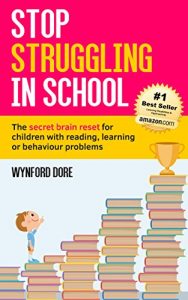
That’s the program I developed is ten minutes twice a day. If folks want to read my book, they’re welcome to. They can download it on Amazon, Stop Struggling In School. In there I give links to some free exercises you can download from the internet and that’s better than nothing. If you want the program to find all the potential in your child, then I show you how to get access to my program there. There are free eye exercises on there. There are balance exercises which are good. People should use balance boards for their children and get them doing any exercise that involves movement, stimulation of their vestibular system. Get them off computers because computers are not going to help their cerebellum develop. Get them climbing outside and take them on adventure walks. Get them doing physical activity, that is going to be much more helpful. If they’ve got serious issues, then consider my program. You can find all the details in my book.
There’s an eye exercise I learned about from Dr. Liberman who was on my show. It’s this string that has little balls of different colors. You’re supposed to focus your eyes on the different balls.
I’ve seen it not for some time but it’s a good principle. It’s good at focusing the eyes and it’s good especially when you get beyond 40. It’s good at maintaining the flexibility of the muscles in the eyes so you don’t end up becoming long-sighted and you need reading glasses as I do.
It’s called a Brock string. You exercise your eyes and the muscles in your eyes by focusing on the different balls. It’s a cool exercise.
There’s something that Dr. Liberman probably didn’t tell you. That’s great for exercising your eye muscles within the iris of the eye. If you want to exercise your eye tracking, you need to hold that string out in both hands and keep your head still and focus on different balls one at a time for five seconds, back and forth. That’s a totally different skill with the same tool and that will improve your eye tracking and give you more flexibility. You’ll find reading easier if you have any struggles at all with reading.
I learned I had issues with reading. I loved to read but I get so tired when I read for any length of time. I rarely finish a book. It exhausts me. I get tired and fall asleep. I was talking to Dr. Helen Irlen about this who was one of the speakers at the Bulletproof Conference. She said, “You probably have Irlen Syndrome.” 33% to 50% of all of us have Irlen Syndrome where we either get tired as we read or it’s hard to focus or the letters can move on the page as we’re reading and so forth. There’s an assessment that you take. Both my wife and I have Irlen Syndrome so we have Irlen glasses now. I have a version of these that are for the computer that doesn’t have correction because I’m a little bit nearsighted even after my LASIK surgery. I don’t need reading glasses yet. I have a pair of Irlen glasses for the computer without any prescription and then I’ve got a prescription for when I’m driving. You’ve got some glasses too. Are those Irlen glasses? Are those Bulletproof TrueDark? What are those?
They’re pinhole glasses. These are another way of correcting the muscles in your eye. You can buy them for about $6 or $8 on Amazon. You wear them for ten minutes or fifteen minutes a day. It also strengthens. You can read with these. They’re plastic with little holes and there’s no glass in them. They force your muscles to work harder and they exercise your muscles. Give them a try. That will deal with your reading stuff. Let me get back to this root cause issue and early lenses. I don’t knock anybody else’s theories because all these people are doing good for a lot of people. The root cause of getting tired with reading is almost invariably poor eye tracking. If you correct that at the cerebellum, you’ll find reading gets a lot easier. At the moment, your working memory is controlling your eye movements. What you do in your working memory rather than in the cortex of your brain is at least 40,000 times slower and harder.
You imagine when you learn to ride a bike. When you’re learning to ride a bike, you knew what to do. You were thinking about it but your processing was slow thinking that you fall off. It’s only when the processing has become automatized by the cerebellum and it gets hardwired. You take the processing out of your thinking brain up into the cortex. It’s fully automatic, you don’t have to think and you don’t fall off. For you and about one in four people, eye tracking never becomes fully automatized. Your thinking brain is always involved with moving your eyes. When you were younger certainly and maybe even now, you might even hold your pen in a slightly unusual way. What controls your eyes also controls your fingertips. Fine motor skills, the same part of the brain, controls eye movement and controls fingertips. People who have poor eye tracking, often you’ll find they’re using their whole hand when they’re writing rather than just writing with the tips of their fingers. Both are fine motor controls.
Is this eye tracking issue something that can be diagnosed over a computer program like yours? Do you ideally need to go to see a specialist and get looked at?
We deal with the cerebellum. When you deal with the root cause, you’re dealing with the fundamental reason why important critical skills have never finished their development. We don’t have to work on every individual skill. We work on the electrician. If you have got an eye tracking issue, then certainly 90% of people with eye tracking issues get them resolved when you focus on the cerebellum. The cerebellum then looks for any skills you’re using and say, “I can improve this program,” and it is like a computer program in the brain. It improves the program. It’s the quality control and when it’s developed, it makes every skill far more automatic, far more consistent, far more precise and far more effortless.
At the moment, you’re getting tired because you’re thinking the brain has to work very hard controlling your eyes to put them in the right place. I wouldn’t be surprised if your eyes might even water at times if you’ve forced yourself to read for too long. Certainly, there will be times when you occasionally have to reread a sentence because you’re beginning to get tired. You couldn’t take it in because you’re thinking the brain is full of controlling your eyes rather than having that space available to retain the information you’re reading. The brighter you are, the more likely this is to happen. This whole theory about children who can’t read being less intelligent is totally the opposite of the truth. I see far more children with above average underlying intelligence having struggles with eye tracking than I do children that are average intelligence. There’s another myth we’ve got to get rid of.
Much of the health industry is a generation behind where it needs to be. Share on XAre you doing these exercises yourself to keep your cerebellum in top shape?
I have done them all and I’ve got some benefit. My desk is a lot tidier. My 70th birthday is coming up. I want to keep my brain sharp. I’m going to do it again. The latest program we brought out a couple of years ago is even better than before. We’ve been cutting-edge for many years. Every program we bring out is based upon all that we’ve learned these last few years and all the research. I’m going to do it again because I’ve got a big job to do. I want to reach at least one million kids in the next few years. To do that, I’ve got to be sharp. I’ve got to make some good decisions. I’ve got to communicate clearly. I’m eight out of ten at the moment and I’ve got to get to ten out of ten.
The longer your time horizon, the longer you’re going to live. I know Dan Sullivan wants to live to 150. Nick Delgado who’s been on my show wants to live to 180. Dave Asprey who’s been on my show wants to live to 100-something. It’s a significant milestone, longer than anyone has ever lived so far. It’s exciting times. The longer your time horizon, the bigger your goals and the more active you are as you age, the younger you keep your brain and your whole biology.
I haven’t set a target like all of those. All I know is my brain is the most important organ in my body and I’m going to keep it as fresh and as young as I possibly can. I can still work twelve, fourteen-hour days if I want and I do. My sharpness stays reasonably good for that time but I need even more. My objective is not my own age. My objective is I want to bring everything I’ve learned from these neuroscientists, this jigsaw puzzle I pieced together of how to improve quality of life. I want to get it to the people that are written off. You and I have been having a good life. There are an awful lot of kids and adults out there who are struggling, underachieving, can’t read, can’t concentrate, can’t write, can’t learn, struggling with social skills and so on. Some of them labeled, some of them not. I want to reach as many of those as possible and give them a life. When I’ve done that, I would have fulfilled my objective and then I might start thinking about living to 200 or something crazy. I’m not thinking about that.
My next objective is to transform a million kids. Let’s collect the research data. Let’s start influencing government policy on health and education to bring this amazing breakthrough to the 20% or 25% of our population who are dreadfully underachieving. Many of them illiterate, many of them only partly illiterate. We were in a conference when we saw many, nearly all of whom had underachieved at school, go on to have a great life and be hugely successful financially. For every one of those, there was another 10,000 struggling. A solution for all of those to have a better life is to develop the cerebellum, to find that billion dollars’ worth that’s sitting there is hidden potential between their ears.
How does our audience help you with that wonderful mission of yours of reaching these million kids? It’s a good start for them to work with their family, their children and maybe children that are in their neighborhood or in their school or community. What about those million kids that you want to reach? How do we help you?
I need the help and I would love that. If they want to contact me, I can happily give you my email address. They can look at my website, WithZING.com. They’ll find more information there and some more research. If anybody’s got a great idea about how we can get to the influencers in government, my email address is Wy*****@******NG.com. I’d love to hear from them. I’ve got some amazing coaches who have worked with me for a long time specializing in helping kids, specializing in helping athletes, specializing in helping people of all ages and I can put them in touch. They can talk to people who have gone through the program. This, to me, is my new life purpose, the one that got switched on as I was driving to find out if my daughter was going to live.
Let’s switch to a lightning round of our episode. I have a bunch of questions that I want to bang out here and get your take on. Montessori versus Waldorf/Steiner? What’s your take on those two approaches to teaching kids?
They’re all on the right wavelength and often it’s not which, it’s who can I get my child to. Some people would have to move to get any one of those three. If you’ve got a child at any one of those three, the chances are they’re going to do better. They’re going to find more potential because they do a lot of movement. Some of them do a lot of movement and balance, which is intelligent. They’re based upon all of the science that was there before what we now know about the cerebellum. I would love to help those organizations update it. They’re all going to do better than the government-funded education system.

I had my kids go through Waldorf schools for a bit of time. When we moved out of the area where they didn’t have Waldorf, they didn’t continue it. It was a great enhancement to their learning to have that different style. If you could look at a super learner or somebody who is super advanced, what are some of the things that they’re doing as far as discipline? There’s all this focus on the cerebellum that we covered. Beyond that, what would you say are some attributes or some best practices or habits of super learners? I would couch this by saying that I had a super learner, Jonathan Levi, on the show. If you’re interested in improving your memory or in improving your learning skills and capabilities, that was a great episode.
Some folks are natural super learners and some work hard at it. There are things that we do or some people do. Mindfulness and meditation are a good process because whatever we want to retain has to go into our thinking brain first, in our prefrontal cortex. If that’s full of stuff that shouldn’t be there, we can’t retain much. Most of our long-term learning takes place overnight. It’s what we retain in our thinking brain parked away there that gets transferred nicely overnight into our long-term memory. That’s a great way of learning. The freer we have our working memory, the better life. Folks that pursue meditation, they’re going to find that they retain more and therefore can recall more simply because of that. The process I like to use is to develop the cerebellum because that also empties in a natural and lasting way, the thinking brain. It takes out of it all sorts of stuff that shouldn’t be there. That’s the only contribution I can make to improving fundamental learning and memory recall skills.
There’s one thing I should have said about the schools you mentioned. Any school methodology that encourages children to maintain their creativity and their natural ability to innovate, any school that does that is going to be great. Many of the state schools and the government-funded schools, all they focus on is getting good reports and getting children to the highest results. Most of which is based on knowledge. We don’t need so much knowledge. In my phone, I’ve got Wikipedia and it’s got all the knowledge I’ll ever need. I can look it up in a second at any time. Schools should be changing dramatically to teach more of the fundamentals of negotiation, relationships, team building, leadership and all of that stuff. Some schools go to great lengths to maintain creativity in children and that is critical. It makes a huge difference the whole of their lives. Schools should be focusing on relationships, negotiation, team building, leadership, and all of these other skills rather than all their time on, “Let’s get these children to the highest possible marks and knowledge retained.” The schools you mentioned are pretty good. If anybody hasn’t watched that Sir Ken Robinson video on TED Talks on innovation and creativity in schools, they must. It’s an absolute classic. Congratulations to those schools because they are doing more than that on the average.
My final question is around the amygdala. What role does that part of the brain play? A lot of people will have PTSD from traumatic events or even witnessing traumatic events. You watch enough horrific stuff on TV that goes into your amygdala and that wrecks a lot of havoc. I’d love your thought on the amygdala and the health of the amygdala.
We talked a lot about the cerebellum. The cerebellum is one of three important ways of remembering or learning in the brain. The cerebellum remembers learned skills and perfects them. That deals with all of the things that we don’t think about that we do automatically. It’s the cerebellum that creates those. The hippocampus is the bit of the brain that remembers, that indexes, that behaves like a librarian. For all of those things, we recall to our thinking brain all of our memories, all of the pictures, the events, the dates, the times, the facts. They’re all stored by the hippocampus. The amygdala is the special bit that connects events with emotions that we are feeling at the time. The amygdala doesn’t remember in words. The amygdala remembers the type of emotion whether it’s positive or negative, and the event, the situation, all of the aspects of the situation.
Deal with the root cause and the symptom goes away. Share on XIn brief, PTSD is caused by some serious traumatic event and often because it’s the negative that’s the strongest emotions. The fear, the pain that we’re facing will burn in serious connections. PTSD often can happen at any time in life. Children that go through traumas, children that have been abused physically, mentally, psychologically, sexually, especially at some critical ages but at any age in childhood. Either three to five is a critical age. Puberty is another critical age. At any time in those formative years, any situation where a child is feeling threatened, not safe, not loved, abandoned and misunderstood. I look back with guilt and pain. I misunderstood my own daughter that couldn’t read. I thought she wasn’t trying hard enough. I thought she was a bit lazy and others did too. I was wrong. That caused her trauma.
Any trauma gets associated by the amygdala. The situation around it, the people, the smells, even the colors and so on can get associated with that strong emotion that they were experiencing at the time. At any time in life when any one of those aspects of the situation occurs again, the amygdala says, “There’s a warning. Go into fight or flight. Be prepared. Your life is under threat,” and you go into this fight or flight which can cause panic attacks and can cause serious anxiety. It causes a complete change in character because the amygdala switches off the logical brain and transfers control to the reptilian brain where you’re just in fight or flight. There’s no point in saying to someone that’s in that situation, “Pull yourself together.” They have no option. There’s no point in saying, “There’s no real danger.” They’re not responding to that. They’re out of that. Understanding them is huge.
The amygdala is incredibly powerful. It was intended to save us when we got tigers, snakes and wild animals chasing us and so on thousands of years ago. Now, we don’t have that level of threats because we’re a bit more sophisticated. The mechanism is still there to protect us. It’s that nearly all the time now, they are false alarms caused by the subconscious connections with the previous situation that forced that strong amygdala memory between event, situation and the emotions being felt. Perhaps I should make clear that developing the cerebellum doesn’t resolve those issues. It won’t take them away. That’s something I’m working research on. What we do by increasing working memory capacity, we give more emotional control. We take people further away from those amygdala memories that caused them much harm. That’s a whole new topic. It’s an exciting topic. It’s one that’s misunderstood by people.
Wynford, thank you so much for sharing your wisdom, your journey, and your insights with us. I’m excited to try out your program. I’m excited to go through that and share the results with our audience. If we can send our audience to a particular website, that’s going to be WithZING.com, and if they wanted to contact you directly to help you with your mission.
I would love that. I need help, advice, ideas, and connections with people that would benefit.
Thank you so much and thank you, readers. Now, it’s time to take some action from what you’ve learned. This isn’t about passively sitting back and reading the episode and getting entertained. This is about applying this stuff in your life and the lives of people you love. We’ll catch you on the next episode.
Links and Resources
Connect with Wynford Dore
Books
Businesses/Organizations
Previous Get Yourself Optimized Episodes
Harnessing Creativity and Problem Solving Through Your Right Brain with Bill Donius
Heal Your Pain Without Drugs or Surgery, Using Stem Cell Therapy with Dr. Harry Adelson
Reclaim Your Health and Boost Your Brainpower with Dave Asprey
